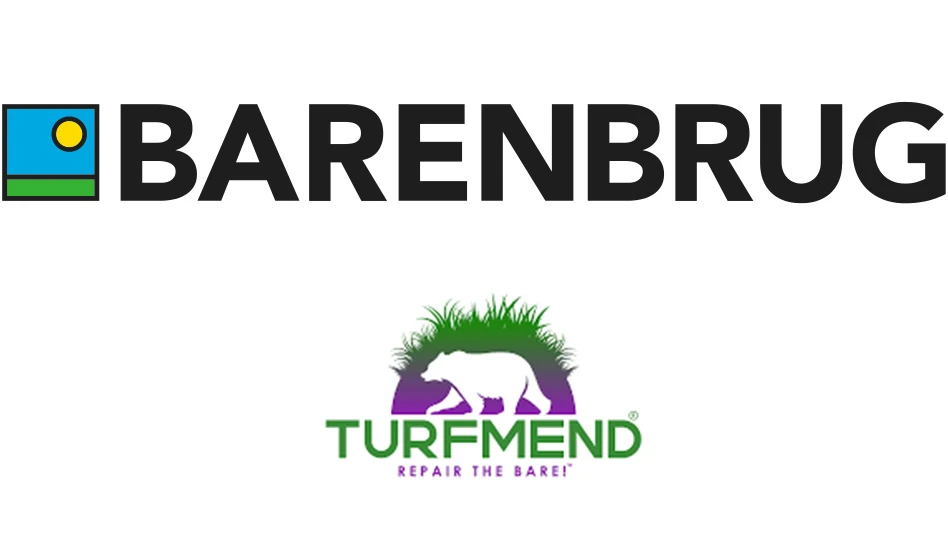 The annual bluegrass weevil has become a major pain in the pocket for many golf courses in New England and the Mid-Atlantic areas. But now the weevils are slowly moving south and west. In fact, they have been reported in North Carolina, Ohio and even as far west as California. And that’s not good news for superintendents in any region.
The annual bluegrass weevil has become a major pain in the pocket for many golf courses in New England and the Mid-Atlantic areas. But now the weevils are slowly moving south and west. In fact, they have been reported in North Carolina, Ohio and even as far west as California. And that’s not good news for superintendents in any region.
“The entire Northeast is now in the `weevil hot spot,’” says Dr. Patricia Vittum, associate professor of entomology at the University of Massachusetts. “But we have had reports of weevil damage from northeastern Ohio, West Virginia, the Williamsburg area of Virginia, and the mountains of western North Carolina. They are also well established on many courses from Toronto to Quebec City, including Ottawa and Montreal in Canada. All of these areas have conditions where Poa annua can grow and compete quite well.”
The American Entomological Institute shows that the weevil’s insipid march along the country’s golf trail had been reported in more than 40 states, from Maine to California, says Dr. Harry Niemczyk, a turf specialist and entomologist at Ohio State University and the Ohio Agricultural Research and Development Center. Why, you ask? “The obvious, namely the climate and large numbers of golf courses that support their primary host plant, annual bluegrass (Poa annua).”
One of the major questions facing superintendents as winter rolls into spring is how the vagaries of the 2013-14 weather will affect the weevil’s over-wintering and potential damage the insect might wreck on turf. Much of the country has experienced a manic winter – warm, then cold, rain then snow cover. So what will give when the growing season begins in earnest?
 “I don’t think anyone knows yet whether the extreme cold temperatures we experienced in early January will reduce over-wintering annual bluegrass weevil populations,” Vittum says. “Most winters the weevils seem to survive just fine – adults find protection against desiccating winds and wait until spring.” She adds her “suspicion” is that any areas that experienced extreme cold and did not have snow cover at the same time might see at least a small reduction in weevil populations. Areas where snow remained on the ground during the cold spell may not see any noticeable impact on the population.
“I don’t think anyone knows yet whether the extreme cold temperatures we experienced in early January will reduce over-wintering annual bluegrass weevil populations,” Vittum says. “Most winters the weevils seem to survive just fine – adults find protection against desiccating winds and wait until spring.” She adds her “suspicion” is that any areas that experienced extreme cold and did not have snow cover at the same time might see at least a small reduction in weevil populations. Areas where snow remained on the ground during the cold spell may not see any noticeable impact on the population.
Dr. Albrecht Koppenhoffer, extension specialist, Rutgers University’s Department of Entomology, doubts a few colder-than-usual days will have much of an impact on them. “Maybe in the already normally colder areas of the distribution, temperatures got cold enough to have some negative impact on them. But in the New York metropolitan area and areas with similar and warmer temperatures I doubt that they will be much affected. It might also depend on how much snow was on the ground at the time of the coldest temps. Snow does a pretty good job at insulating the ground.”
It will interesting to see how weevil populations will be affected by winter’s weather, says Keith Happ, an agronomist with the USGA’s Green Section’s Mid-Atlantic Region, because in most areas the snow cover may have provided an insulation effect.
“We already know that the snow provides an insulation effect for the turf. Remember, the weevils over-winter in the high grass and or leaf litter,” he says. Add 12 to 15 inches of snow and it may have been sufficient for the beetle to “get through” the winter.
Dr. Benjamin McGraw, associate professor of golf and plant sciences at the State University of New York-Dehli, doesn’t suspect that adult weevils over-wintering off of playing surfaces are likely to experience a major drop off in numbers.
|
Treatment Adults can be targeted with a pyrethroid or chlorpyrifos when the forsythia plant begins to drop flower petals (“half green-half gold”). But weevils have developed resistance to pyrethroids in many parts of the current range, adding to the challenge. Target the larvae with indoxacarb, spinosad, or trichlorfon when rhododendron catawbiensis is in full bloom (often mid-May in the metropolitan New York area), says Dr. Vittum. “Some superintendents use a combination product with chlothianidin and bifenthrin and have been pleased with the results. But in areas where weevils have developed resistance to pyrethroids, the standard way to manage resistance is to avoid using that chemical class--at least for a season or two. Chorantraniliprole can reduce larval populations as well, but sometimes should be used in conjunction with another product. Chlorantraniliprole should be applied about two weeks after the forsythia bloom.” Any good management program needs to involve regular monitoring. That helps time management protocols better, making them more effective, reducing the number of applications, and ultimately reducing the selection for resistance. “The annual bluegrass weevil will get resistant with intensive insecticide use, and in the worst cases only on active ingredients still seems to work and only against the larvae,” says Dr. Albrecht Koppenhoffer, extension specialist, Rutgers University’s Department of Entomology. “And there is no reason to believe they would not get around that one eventually if is overused.” |
“For one, the adults do not dig very far into the soil profile. You could go out right now and find the adults in the very top few centimeters of the soil (less than an inch down),” he says. “They do not buffer themselves against frosts like white grubs.” Grubs will move up and down in the profile to protect themselves from freezing conditions. Many insects, especially beetles in temperate areas have a natural “antifreeze” like the component (glycol) in their hemolymph (blood like substance) that allows them to tolerate freezing conditions.
The annual bluegrass weevil faces two theoretical winter scenarios, says Darin Brevard, director of the USGA’s Green Section Mid-Atlantic Region. However, Brevard adds: “We all know that the pest always wins.”
First, the country could have winter weather that remains cold well into early April with a warm-up in mid to late April. “This may, and I emphasize may, encourage most weevils to emerge at the same time, which makes targeted insecticide applications to control adults easier to time,” Brevard says. “The second would be an early warm-up that encourages emergence of overwintering adults followed by a cold snap. When the weevils emerge from their winter cover, they lose some of that winterization that I mentioned earlier, and may be susceptible to mortality from the cold. But again, these little critters have proven to be pretty hardy and resourceful.”
Fluctuating temperatures – really cold followed by mild – especially when there is little or no snow cover, can put “a lot of stress” on a weevil population, Vittum says. The reverse -- consistent temperatures with no real extremes – are least likely to impact the weevils. “Consistent snow cover really helps the weevils survive. Either of these conditions would result in higher populations coming out of their over-wintering sites in late winter or early spring,” she says.
With tongue firmly in cheek, McGraw explains the reason why the weevil is such a formidable opponents. “I think that weevils, and beetles in general, are so successful because of their body types. They are like little tanks, and pretty hardy to many environments and conditions. Therefore I would say, the best case scenario for weather would be a spring tornado that does not damage the turf, but causes the weevils to be sucked into a vortex and carried out into the Atlantic – like the movie ‘Sharknado,’ but with weevils.”
The signs of potential weevil damage are fairly obvious.
Niemczyk points out that beginning in late May and continuing through the summer, superintendents should examine the area under spots-areas that look like anthracnose or similar disease symptoms. “Look for small, white legless larvae with a brown head, about the size of a small grain of rice. If present, it is most likely the annual bluegrass weevil.”
That damage occurs first along the edges of fairways, tees, or collars, and starts as straw-colored patches that spread in size, Vittum says. Almost always the damage centers on annual bluegrass. “You can see medium or large larvae or pupae in the soil if you pull a plug or cut a wedge out of the turf,” she says.
Brevard advises superintendents to “scout, scout, scout,” and adds, “Use pitfall traps to monitor emerging adults as the weather warms. Closely look at collected clippings from greens, tees, fairways and collars to see if there are any adults crawling around in the clippings. Also, just monitor surfaces for any adult weevil activity in the spring. They are hard to see, so you have to stay still and look very closely for movement.” When high numbers of adults are noted, insecticide applications can control adults.
“The best thing that superintendents can do is actively monitor their sites to determine if and where damage will occur, and then use an integrated approach (using multiple tactics),” Koppenhofer says. “If we spot treat populations rather than treating all areas of the course equally we could save a lot of chemicals and effort.”
Once the damage has occurred, typically in June or July, management efforts need to shift toward recovery, says Dr. John Inguagiato, assistant professor of turfgrass pathology at the Department of Plant Science and Landscape Architecture at the University of Connecticut. Light frequent fertilization and irrigation of damaged areas is important to help areas heal. Superintendents might also consider interseeding damaged areas with new bentgrass varieties since annual bluegrass, of course, is the preferred host of the weevil. Previous research has shown bentgrass establishes most effectively when seeded in June or July, he says.
“Post-emergence is always challenging because once you see the damage, most of the larvae are already large,” Vittum says. “The larger they are, the more they eat and the less susceptible they are to insecticides. Nevertheless, the chemicals (that) target larvae will provide some control, just not the high levels we like to see.”
Numerous insecticides can be used to manage the weevil “if they are not already resistant.” Koppenhofer says. “It is very important to do a good job against the weevil in spring,” he says. “Adulticides (chlorpyrifos, pyrethroids, Provaunt) can be applied when forsythia are about half gold, half green.” Systemic larvicides (Acelepryn) can be applied between the forsythia bloom (half gold, half green) and full bloom flowering dogwood or eastern redbud to reduce the young larvae inside the plants. And larvicide (Provaunt, Conserved, Dylox) can be applied between full and late bloom of Catawba rhododendron hybrids to reduce the larger larvae feeding externally.
It is important to optimize the efficacy of application while reducing the frequency. Again, monitoring is essential. The common practice is to control the adults. “Efforts should concentrate more on the larvae as that allows for more targeted applications, tends to be softer on beneficial insects, and thereby delays or even prevents insecticide resistance development,” Koppenhofer says.
John Torsiello is a Torrinton, Conn.-based writer and frequent GCI contributor.

Explore the February 2014 Issue
Check out more from this issue and find your next story to read.
Latest from Golf Course Industry
- Turfco unveils new fairway topdresser and material handler
- Ignite Attachments adds new box plane and grapple
- Mackenzie & Ebert working on new Caribbean course
- Keswick Hall renovating Full Cry course ahead of big year
- The alpha wolf
- Landscapes Golf Management promotes six
- Introducing our March 2025 issue
- A YouTube channel for equipment managers





